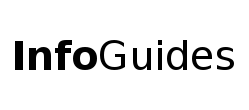
 | University Libraries
| University Libraries
Please note:
APA 7th edition 2020 is out. There is a print copy in Fenwick reference.
Summary of notable changes (thanks to College of DuPage Library)
Basic APA Format
(See a nice example of APA formating here )
Your paper should be typed, double-spaced on standard-sized paper (8.5" x 11") with 1" margins on all sides. You should use a clear font that is highly readable. APA recommends using 12 pt. Times New Roman font.
For references:
In-text Citations
Reference citations in text are covered on pages 169-179 of the Publication Manual. What follows are some general guidelines for referring to the works of others in your essay.
For specific examples of how to create in-text citations use the Purdue Owl APA Citations: The Basics
How to Cite Business Databases (from Michigan State Libraries)
Great resource for examples of citing Business resources, which often contain content other than articles.
Bentley University Library has this useful citation guide that includes citation examples for specific business databases
Does your source pass the CRAAP Test*?
How good is the information you have found? Are those websites really telling you the truth? What about those articles you read? Evaluating information and reading sources with a critical eye is an important part of your research. Outlined below are some tips for evaulating information.
CRAAP is an acronym for remembering the criteria you need to use when evaluating information and Web sites.
Currency:
When was it published? How current is the information? When was it last updated? For Web sites: are the links still working?
Relevance:
Does the source relate to your topic? How can it help you? What can you gain by using it for your research? Who is the intended audience?
Authority:
Who is the author/publisher/source/sponsor? What are the author's credentials? Does the Web address reveal anything about the author or source? For example: .com, .edu, .gov, .org, .net? Look at the "about" section of the Web site.
Accuracy:
How truthful and reliable is the information? How correct is the information? Is it supported by evidence? Has it been reviewed or refereed? Can you verify any of the information? Are there spelling or typographical errors? Where does the information come from? Does anything seem suspicious to you? Is there a bibliography or list of cited sources?
Purpose:What is the purpose of the information source? Is the information biased? Is it fact, opinion, or propaganda? Does the point of view appear objective or impartial? Do the authors make their intentions clear?
*CRAAP acronym and descriptions created by the Meriam Library at CSU, Chico. (http://www.csuchico.edu/lins/handouts/evalsites.html)
Scholarly articles are lengthy; include references, footnotes or bibliographies; academic, professional readership; author(s) report original research or experiments; may be illustrated with graphs or charts; may not have color pictures or ads; titles often start with "Journal of the" or "Journal for the".
Popular articles are short, terse; rarely footnoted; references seldom listed; inform, entertain general public; written by staff or freelancers; glossy/color photographs, ads; sold in stores, newsstands, etc.
Ask a Librarian | Hours & Directions | Mason Libraries Home
Copyright © George Mason University